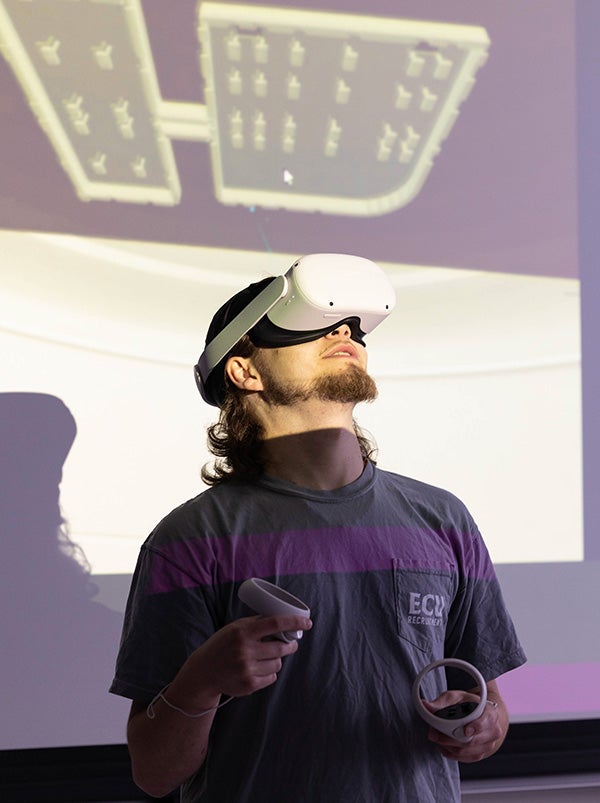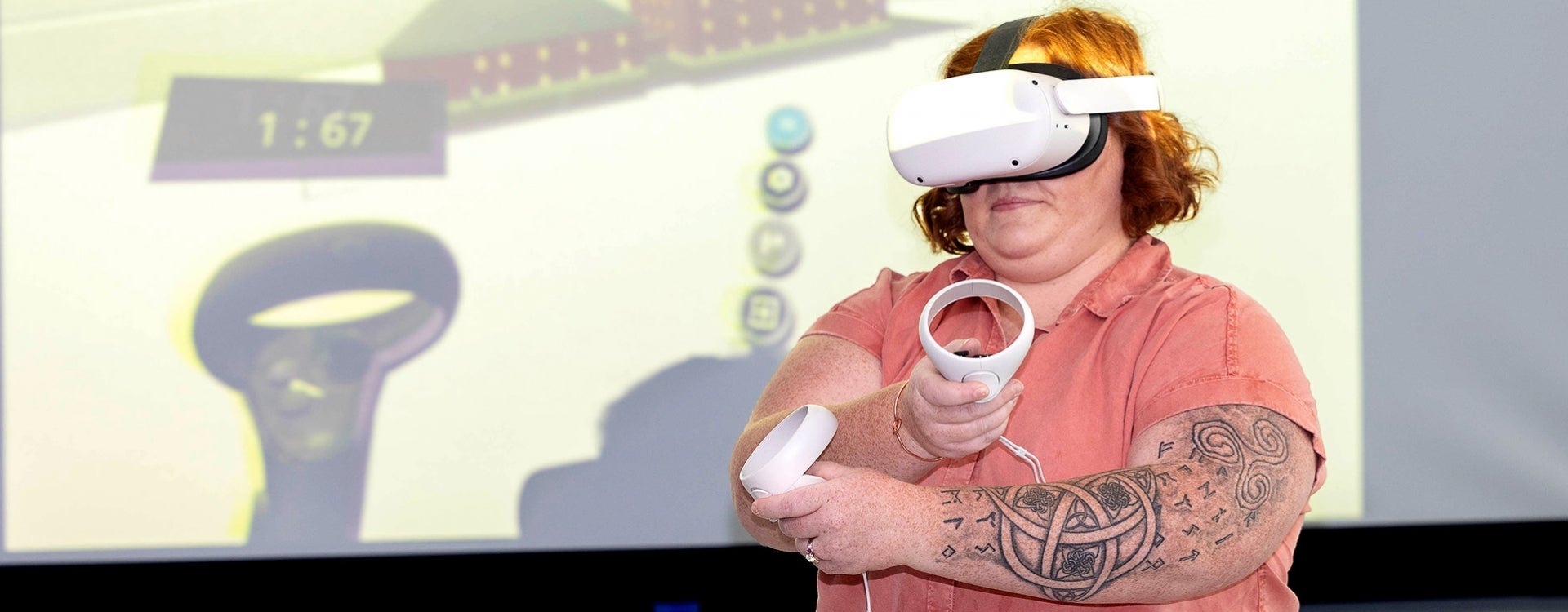NEW VISION
VR headsets give construction students unique building views
Leondre Horne looked at the design of the hotel and convention center.
“It looks good on the outside. It looks great,” the East Carolina University construction management major said.

Braxton O’Hara uses virtual reality technology to display and discuss the foundation of the building he and a team of construction management students designed.
A look through a virtual reality headset told a different story.
“We saw a second floor that didn’t have a door to it, so we had to go back and fix that,” student Nathan Groves said.
VR technology is a growing trend in the construction industry, and students in Dr. Yilei Huang’s construction modeling and technology course used that technology as they designed a hotel and convention center as part of a semester-long project.
“I loved it,” student Karigan Seagle said. “It’s good to see visually what we built over the semester. It’s new technology. In the real world, we might not use this because we’re not all going to be in the building modeling part of it, but it’s good for us to be familiar with it.”
Students worked in teams to design the complex. The project involved everything from the outside grounds and building foundation to the sizes of the hotel rooms and colors of the convention center walls. They placed staircases, elevators and restrooms in their designs, and even picked out the types of windows.
All that work was done on a standard computer. The VR headset provides students a different perspective of their designs.
“We could actually see some mistakes in the VR headset that we didn’t see on the computer, so that was pretty cool,” Cole Johnson said.
The VR technology allows students to walk inside their designs and view them from every angle. They can look underneath the structure to view the foundation, climb stairs, view the layout of conference rooms from above and see the placement of beds and tables in the hotel rooms as if they were guests entering through the door.
“It was cool to be able to see the inside of the building,” Brexton O’Hara said.
While he said he had used VR headsets a couple of times previously to play games, fellow student Mystery Knope said she had never used such a device.
“They were a little bit difficult. I feel like I need a lot more training,” she said. “I’ve never used anything like that before, but it was definitely a cool experience.”

Dr. Yilei Huang used a course innovation grant to bring virtual reality technology into his construction modeling and technology course.
Huang said many students and construction industry professionals may have used VR technology for video games so they are growing more accustomed to their use.
“These are still mainly for entertainment, but they can be adapted for this use,” he said. “This is the way the industry is going, especially some of the bigger companies. They have actually shifted their designs to these VR headsets and allow their customers to see it. It’s a lot easier to look at the design in this immersive and personal perspective rather than just the computer models. I think that’s big.”
He said there is another reason the use of VR technology is increasing in the construction industry.
“The cost of the devices has come down a lot,” Huang said. “And these are the newest generation. They are wireless so they can be used anywhere. They don’t have to be hooked up to a computer. They can be used wherever you want, so they’re a lot easier to use these days.”
Funding for the headsets came from an ECU course innovation grant.
“This is the first time the Department of Construction Management has VR for student use in class,” Huang said. “We’re hoping to do more of this and in other classes as well. I think the students like it. It’s something new, and they can use it and see what the trend is in the industry.”
